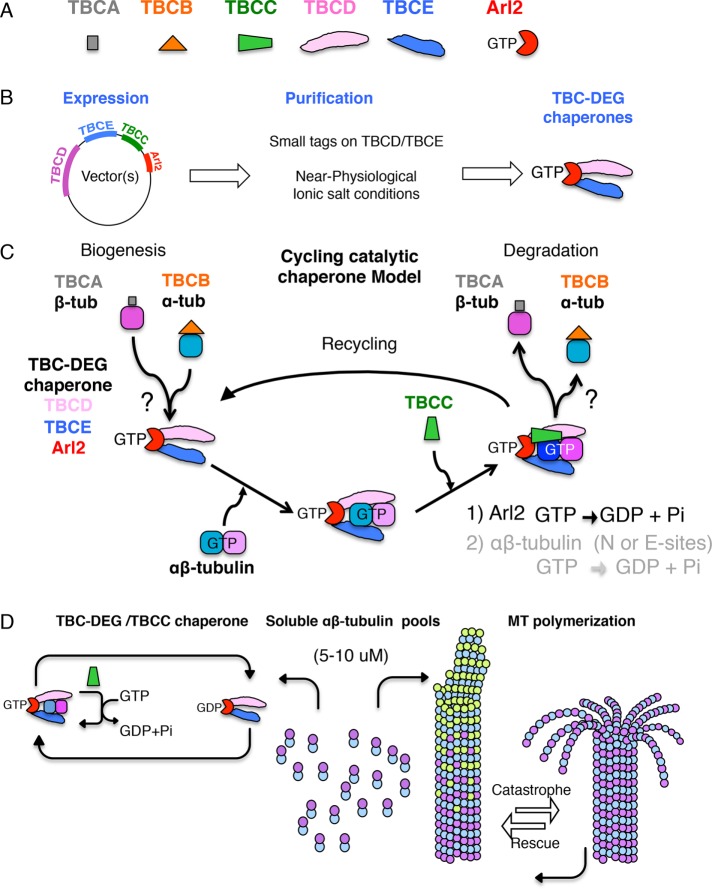FIGURE 1:
The “cycling catalytic chaperone” model for tubulin factors and Arl2 function, based on recombinant reconstitution and in vivo cell biology studies. (A) The tubulin cofactors (TBCA, TBCB, TBCC, TBCD, and TBCE) and the Arl2 GTPase shown in schematic format. (B) The biochemical reconstitution approach that led to identifying TBC-DEG chaperones. Expression was accomplished using vectors with multiple genes. Purification was accomplished with small tags at the TBCD and TBCE N-termini in near-physiological ionic strength conditions. These approaches led to isolation of TBC-DEG chaperones, which consist of TBCD, TBCE, and Arl2. (C) The revised “cycling chaperone” model for the activity of tubulin cofactors and Arl2 in tubulin biogenesis and degradation (adapted from Nithianantham et al., 2015). (D) The role of the cycling TBC-DEG/TBCC chaperone in regulating the homeostasis of soluble αβ-tubulin pools leading to improved MT polymerization in vivo (adapted from Nithianantham et al., 2015).

